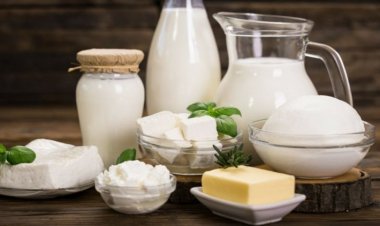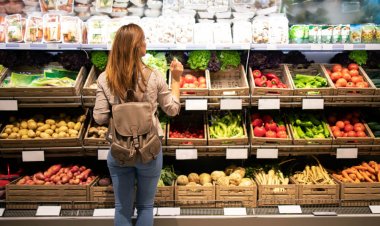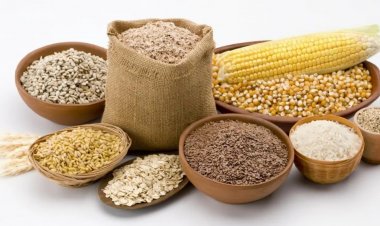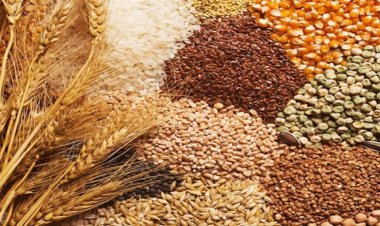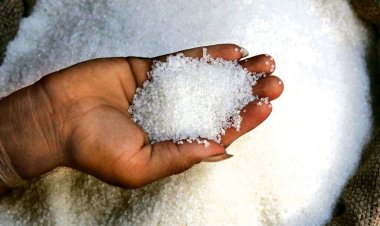Exports decline by 15.5 per cent in first nine months but agri exports go up by 9.8 per cent
The merchandise exports of the country registered a 15.5 per cent decline during the first nine months — April to December 2020 — of the current financial year. But the exports of agricultural products went up by 9.8 per cent over the same period. Agriculture came up with better results even when most of the sectors of the country’s economy were in the depths of a recession on account of the Covid-19 pandemic.

It is the agriculture sector that is currently giving the greatest boost to the country’s economy. The merchandise exports of the country registered a 15.5 per cent decline during the first nine months — April to December 2020 — of the current financial year. But the exports of agricultural products went up by 9.8 per cent over the same period. Agriculture came up with better results even when most of the sectors of the country’s economy were in the depths of a recession on account of the Covid-19 pandemic. What is significant is that while agriculture production within the country was setting new records during the pandemic, a decline in agriculture production across the world led to a rising trend in prices, and rising inflation has seen several countries of the world, including Argentina and Russia, impose restrictions on exports of agricultural products.
This picture of exports emerges from the recently released data on foreign trade. If the trend continues, it may bring relief to the government and the protesting farmers because the way the prices of agricultural products are rising in the international market, will create conditions for better prices within the country. Also, the production has been greater in the Kharif season thanks to a normal monsoon and a similar production is expected in the rabi season as well. However, the government will have to focus more on this front in order to cash in on this good opportunity.
As per the data released by the Ministry of Commerce, the overall exports of products from the country stood at 201.30 billion dollars during the April-December period in the current financial year (2020-21). These stood at 238.27 billion dollars during the same period in the previous financial year. In contrast, the exports of agricultural products rose from 26.34 billion dollars to 28.91 billion dollars over the same period. The imports of agricultural products during April-December 2020 declined by 5.5 per cent, which led to a surplus of 13.07 billion dollars in the foreign trade of the country against that of 9.57 billion dollars over the same period in 2019-20.
A major reason for the surplus in the international trade of agricultural products, apart from the rise in exports, is the decline in lentil (dal) imports as the production of lentils has gone up, thanks to the adoption of a better prices policy in the country and their government purchases, and has reached close to our total consumption. However, such a situation has not been achieved in the case of edible oil imports.
As for exports, non-basmati rice witnessed the greatest increase at 110 per cent. Sugar exports went up by 46 per cent and cotton exports by 96.5 per cent. The rise in oil meal exports was 45 per cent and that in the exports of processed fruits and vegetables 17.38 per cent. Although the exports of wheat rose by 428 per cent, the quantity is not too large. There has been a decline of 1.03 per cent in basmati exports, however.
The primary reason for the rise in exports of agricultural products from India has been the increased prices of agricultural products in international markets. According to the Food Price Index (FPI) data released by the Food and Agriculture Organization (FAO) of the United Nations (UN) on Thursday, February 4, the prices have reached their 78-month high during May 2020 to January 2021. This has been the highest increase since July 2014.
In fact, things are returning to normal with an increase in economic activities in most of the countries of the world after the Covid-19 pandemic and this has led to the evolution of demand for these products. While several countries like Brazil, Argentina, Ukraine, Russia, Thailand and Vietnam have experienced droughts, consecutive normal monsoons have led to above-average rainfall and increased production in India. Also, an increase in prices in the international market has brought several of our agricultural products, including sugar, non-basmati rice, cotton and oil meal, in a competitive position and this has led to their rising exports. The wheat prices have also turned competitive after a long time, but we are currently not in a position to determine whether we can go for large exports of wheat like those of non-basmati rice, because a large share of the wheat is in the central pool stock. It has been purchased in the name of food security. Some experts say it will be difficult to export from the public stock because the peace clause that we have invoked at the World Trade Organization (WTO) has food security as its reason. Therefore, if we export from this stock the case may be taken up at WTO. Several countries have already taken to the WTO dispute settlement mechanism the case against the government decision to export sugar in view of the support measures and a decision on this is expected in 2021. A major reason for the increase in prices in the international markets is the large-scale purchase of agricultural products by China.
As far as exports of agricultural products from the country are concerned, they have witnessed a see-saw performance over the years. There had been a record rise in exports during the UPA years. During 2003-04 to 2013-14, the exports of agricultural products from the country had gone up from 7.53 billion dollars to 43.25 billion dollars. But then the phase of decline started and the exports had fallen to 32.81 billion dollars in 2015-16. The figures stood at 35.60 billion dollars in 2019-20.
If the current trend of increase in exports continues, the farmers may gain by way of better prices. Higher production is expected during the current rabi season as well thanks to better weather and record sowing of crops. If prices remain on the higher side, this will benefit the farmers and the government both.



 Join the RuralVoice whatsapp group
Join the RuralVoice whatsapp group

















